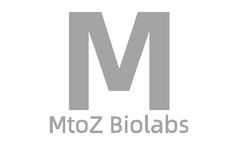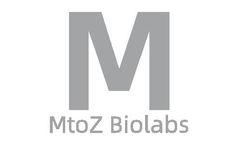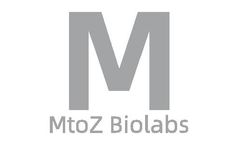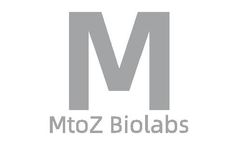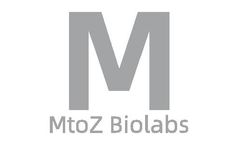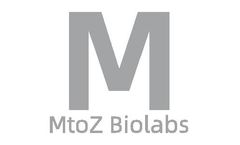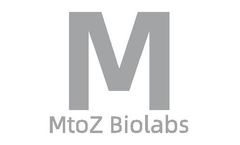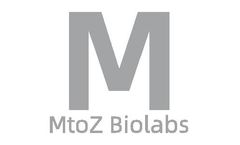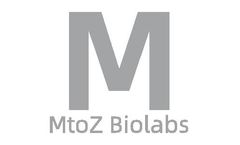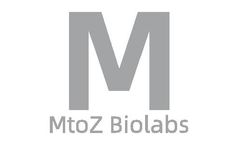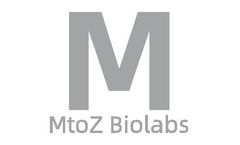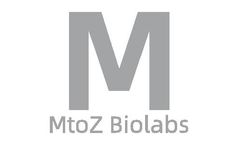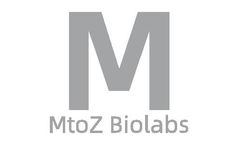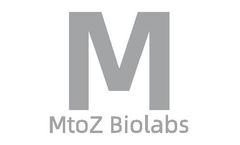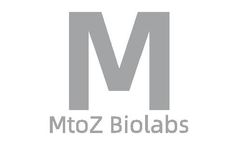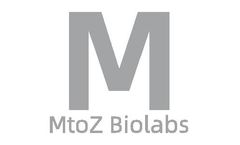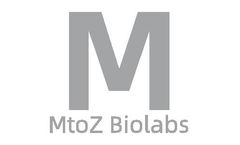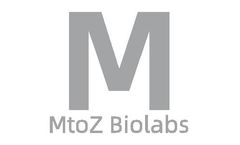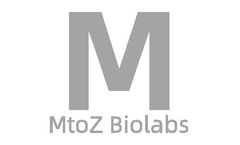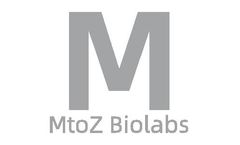Refine by
Mtoz Biolabs Lc Ms Services
20 services found
by:MtoZ Biolabs based in, MASSACHUSETTS (USA)
Small molecule drugs, predominantly chemically synthesized drugs with molecular weight lower than 1000 Da. These drugs are characterized by their widespread use and mature theoretical foundations. Statistically, small molecule drugs comprise about 98% of commonly used medications. ...
by:MtoZ Biolabs based in, MASSACHUSETTS (USA)
Leukotrienes (LTs) are a group of inflammatory lipid mediators derived from arachidonic acid (AA) via the 5-lipoxygenase (5-LOX) pathway. A characteristic feature of LTs is that they are produced by leukocytes and share a conjugated triene structure. LTs consist of cysteinylleukotrienes (CysLTs) and leukotriene B4 (LTB4). CysLTs contain a cysteine ring, whereas LTB4 is a noncysteine containing ...
by:MtoZ Biolabs based in, MASSACHUSETTS (USA)
Protein-based macromolecular drugs, typically organic compounds with molecular weights exceeding 1000, depend on cellular biosynthesis and are also known as biologics. Compared to traditional small molecule drugs, protein drugs are characterized by their high potency, strong specificity, low toxicity, clear biological function, and conducive to clinical application. Protein drugs are the ...
by:MtoZ Biolabs based in, MASSACHUSETTS (USA)
Far-western blot is a molecular biology method based on western blot technology that can be used to detect protein-protein interactions in vitro, especially interactions that do not require the natural structure of the target ...
by:MtoZ Biolabs based in, MASSACHUSETTS (USA)
Diacylglycerol (DAG), also known as diglyceride, consists of two fatty acid chains and a glycerol molecule. It primarily exists in two forms: 1,2-diacylglycerol and 1,3-diacylglycerol. DAG can be synthesized via the phosphatidic acid pathway in the endoplasmic reticulum by the action of phosphatidic acid phosphatase or produced during the lipolysis of triglycerides (TAG) by TAG lipase. DAG is ...
by:MtoZ Biolabs based in, MASSACHUSETTS (USA)
Sphingolipids are fundamental structural components of cell membranes, forming lipid rafts by combining with other components. Sphingolipids are involved in regulating biological processes such as cell growth, differentiation, and apoptosis. Ceramide is the central hub of the sphingolipid pathway, including sphingomyelin, glucosylceramide, and galactosylceramide, and is mainly divided into ...
by:MtoZ Biolabs based in, MASSACHUSETTS (USA)
Active Pharmaceutical Ingredients (APIs) are substances or mixtures employed in the production of drugs. They have pharmacological effects or directly contribute to diagnosing, treating, mitigating symptoms, controlling, or preventing diseases, in addition to influencing the structure or function of the body. ...
by:MtoZ Biolabs based in, MASSACHUSETTS (USA)
Prostanoids, also known as eicosanoids, are a family of signaling molecules produced and secreted by various types of cells under both normal and pathological conditions. In the human body, these metabolites are excreted into body fluids such as plasma and urine. The precursors of prostanoids are 20-carbon polyunsaturated fatty acids (PUFAs) like arachidonic acid (C20:4), which are esterified in ...
by:MtoZ Biolabs based in, MASSACHUSETTS (USA)
Peptides are compounds formed by multiple amino acids linked by peptide bonds and can be prepared via recombinant DNA expression, biological extraction, or chemical synthesis. Peptides represent a unique class of drugs with certain characteristics of small molecule drugs as well as properties of large proteins and other biologics. Most intrinsic signaling molecules are peptide-based, such as ...
by:MtoZ Biolabs based in, MASSACHUSETTS (USA)
mRNA medication is a novel therapeutic method that utilizes messenger RNA (mRNA). mRNA is a sequence of ribotide that encodes for proteins and can express specific proteins through the translation process within cells. The core principle of mRNA medications is to introduce designed mRNA molecules into the patient's body to produce proteins needed for treatment by utilizing the host cell's ...
by:MtoZ Biolabs based in, MASSACHUSETTS (USA)
Class III medical devices are medical devices that pose potential danger to the human body and require strict control to ensure their safety and effectiveness. These devices typically include implants, life-supporting or life-sustaining devices, and equipment that poses potential danger to the human ...
by:MtoZ Biolabs based in, MASSACHUSETTS (USA)
Proteolysis targeting chimera (PROTAC) drugs offer a novel approach to disease treatment by leveraging the body's innate protein degradation pathways. In contrast to traditional small-molecule inhibitors, PROTAC drugs promote the degradation of specific proteins rather than directly inhibiting their function, thus mitigating or eliminating their role in disease progression. ...
by:MtoZ Biolabs based in, MASSACHUSETTS (USA)
Antibodies bind to various antigens with high affinity and specificity, playing a crucial role in adaptive immune response to infections and can also mediate autoimmune diseases by targeting self-antigens. Antibodies facilitate immunity by inhibiting critical stages of a pathogen's replication cycle, such as receptor binding and cellular entry, activating the complement system, or initiating ...
by:MtoZ Biolabs based in, MASSACHUSETTS (USA)
In eukaryotic cells, the 3' end of mRNA is often extended with a poly(A) tail, a sequence of purine nucleotides. The poly(A) tail is a long chain of adenosine nucleotides of variable length. This tail is crucial for mRNA stability, transport, and translation. The analysis of mRNA's 3' poly(A) tail is a vital technique in studying the polyadenylation at mRNA molecules' 3’ ends, with significant ...
by:MtoZ Biolabs based in, MASSACHUSETTS (USA)
Eicosanoid, including prostaglandin (PG), thromboxane (TX), leukotriene (LT), and lipoxin (LX), is critical signaling molecule. Prostanoid, a subset of eicosanoids, comprises PG and TX. Prostanoids are named based on the number of carbon-carbon double bonds in their molecules. Most biologically active PGs and TXs belong to the series 2 molecules with two carbon-carbon double bonds. ...
by:MtoZ Biolabs based in, MASSACHUSETTS (USA)
Endocannabinoids are amphipathilic molecules synthesized from phospholipids in the nervous system. They are a part of the endocannabinoid system, which includes G protein-coupled receptors. The most extensively studied endocannabinoids are N-arachidonoylethanolamine (anandamide) and 2-arachidonoylglycerol ...
by:MtoZ Biolabs based in, MASSACHUSETTS (USA)
Antibody therapies leverage human immune system antibodies to treat diseases by targeting specific proteins on pathogens or abnormal cells with exceptional precision. The development of antibody therapies has evolved from early polyclonal sera to monoclonal antibodies, and now to genetically engineered antibodies, focusing on enhancing drug safety, effectiveness, and manufacturing ...
by:MtoZ Biolabs based in, MASSACHUSETTS (USA)
Activity-based protein profiling (ABPP) is a versatile and powerful chemoproteomic technique, utilizing activity-based probes (ABPs) that selectively and covalently interact with the active sites of proteins. This approach allows for the capture and analysis of tagged proteins using various proteomic tools. ABPP facilitates the global and quantitative examination of protein functional states in ...
by:MtoZ Biolabs based in, MASSACHUSETTS (USA)
Drug affinity responsive target stability is a label-free small molecule probe technique under chemical proteomics first proposed by Lomenick et al. in 2009, which makes it possible to track and identify target proteins whose stability changes after binding with small molecules. To date, Drug affinity responsive target stability has been a focus in tracking proteins in animals, fungi, bacteria, ...
by:MtoZ Biolabs based in, MASSACHUSETTS (USA)
Cerebrospinal fluid (CSF) is secreted within the central nervous system (CNS) and fills in the ventricles, the subarachnoid space of the brain, and the spinal column. CSF's role is to protect the brain from physical impacts. Furthermore, CSF plays a crucial role in the circulation of nutrients and chemicals in the blood and in waste management by actively transporting or facilitating bulk flow ...

